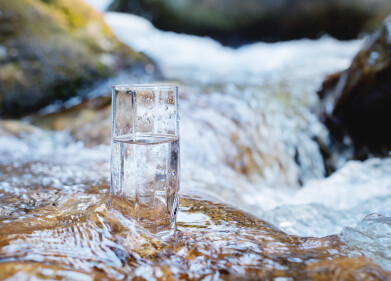Water/Wastewater
Are There Microplastics in Drinking Water?
Feb 10 2021
Microplastics have been discovered in virtually every part of our environment, from the top of Mount Everest to the deepest part of the ocean (the Mariana Trench). Therefore, it should come as no surprise that microplastics have been found in all types of water, from marine water to freshwater to wastewater to drinking water (both bottled and tap), while airborne exposure to microplastics is another area of research in its infancy.
To date, nine studies have identified the presence of microplastic particles in drinking water supplies. The counts recorded in these studies ranged from between 0 particles per litre to 1,000 particles per litre, though it’s inadvisable to compare one study with another due to the different sources being tested and the different particle sizes recorded.
How does microplastic pollution end up in drinking water?
There are several documented sources of the microplastic pollution that has been found in drinking water, including the following:
- Wastewater discharge, concerning both treated and untreated effluent
- Surface run-off, normally caused by heavy rainfall
- Industrial effluent
- Combined sewer overflows
- Atmospheric deposition
- Degradation of plastic waste
- Leaching from plastic bottles and caps
Further research is required to fully recognise and quantify the sources of microplastic pollution in our drinking water, but previous studies suggest that surface run-off and wastewater discharge are the two main contributing factors.
What are the potential effects of ingesting microplastics in drinking water?
There are three categories of possible dangers caused by ingesting microplastics in drinking water, which can be defined as the chemicals contained in the water, microbial pathogens (caused by biofilms in the water) and the physical particles themselves. The former two concerns have long been identified as potentially damaging to the human body and have constituted a facet of wastewater treatment systems for many years.
Contrastingly, very little is known about how ingesting microplastic particles may affect our internal organs, though it’s thought that any particles greater than 150 µm in size can simply be excreted through faeces, while exposure to smaller particles is thought to be negligible. However, more research is required to fully understand the issue.
What happens next?
Although the World Health Organisation is not overly concerned about the possible dangers of ingestion of microplastics in our water, the concentrations of that substance are only likely to increase in the coming years as our consumption of plastic continues to increase. Indeed, one of the environmental implications of coronavirus has been a prevalence of single-use personal protective equipment (PPE), the majority of which is discarded improperly.
This could theoretically cause a build-up in the amount of microplastics in all water sources, including drinking water supplies. As a result, individuals and companies should make a concerted effort to reduce their consumption of plastics and reuse or recycle waste items as much as possible.
Digital Edition
AET 28.2 April/May 2024
May 2024
Business News - Teledyne Marine expands with the acquisition of Valeport - Signal partners with gas analysis experts in Korea Air Monitoring - Continuous Fine Particulate Emission Monitor...
View all digital editions
Events
Jul 10 2024 Birmingham, UK
Jul 21 2024 Cape Town, South Africa
Australasian Waste & Recycling Expo
Jul 24 2024 Sydney, Australia
Jul 30 2024 Jakarta, Indonesia
China Energy Summit & Exhibition
Jul 31 2024 Beijing, China


















